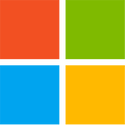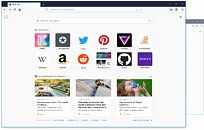
Mozilla Rebrands, Reaffirms its Mission To Protect Open Web Despite Advocacy Team Layoffs
Earlier this year, it was revealed that Mozilla's entire advocacy team was caught in a round of layoffs, leading to speculation that Mozilla would be giving up its advocacy entirely, shifting to a more commercial focus. Now, with the announcement of Mozilla's new branding, aside from updating the brand's look, it seems as though the Firefox company wants to reassure users of its software that it is still dedicated to its mission to "keep the internet free, open, and accessible." The new branding strategy includes a new logo, typeface family, new icons, a T. rex mascot, and new colors.
The new branding push from Mozilla sees the brand move an appearance seemingly inspired by both its history and the text-based OS interfaces of the early years of computing. For the rebranding, Mozilla partnered with design firm JKR (Jones Knowles Ritchie), and the new branding features a cutesy DOS-style flag that doubles as a T. rex, hinting to past Mozilla logos. In the announcement of the rebranding, boldly titled "Reclaim the internet: Mozilla's rebrand for the next era of tech," Mozilla emphasizes that the new look is meant to convey the company's intention throughout its whole ecosystem of products. It seems as though Mozilla is trying to remind everyone that it's work towards a more open internet extends beyond just the advocacy team it recently laid off.
The new branding push from Mozilla sees the brand move an appearance seemingly inspired by both its history and the text-based OS interfaces of the early years of computing. For the rebranding, Mozilla partnered with design firm JKR (Jones Knowles Ritchie), and the new branding features a cutesy DOS-style flag that doubles as a T. rex, hinting to past Mozilla logos. In the announcement of the rebranding, boldly titled "Reclaim the internet: Mozilla's rebrand for the next era of tech," Mozilla emphasizes that the new look is meant to convey the company's intention throughout its whole ecosystem of products. It seems as though Mozilla is trying to remind everyone that it's work towards a more open internet extends beyond just the advocacy team it recently laid off.











































